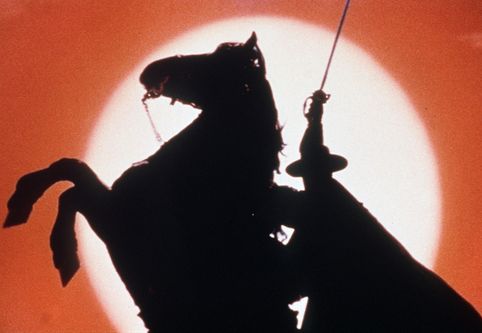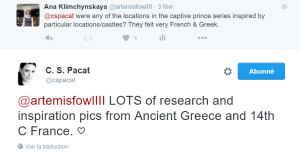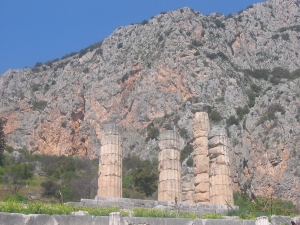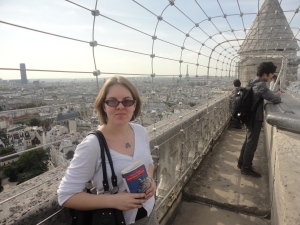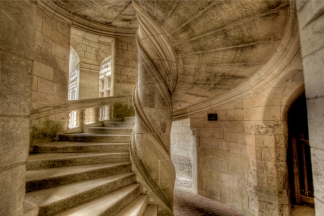I’ve spent the past couple of weeks in Kamchatka, a Russian peninsula that is about as close to the edge of the world as you can get. A closed territory (and military zone) during the Soviet Union, it’s much easier to reach now that it’s part of the Russian Federation instead. Still, it’s a nine hour flight, which is as long as it takes me to cross the Atlantic from Michigan to my native Belarus, and the bizarreness of flying over land for nine hours and still being in the same country is not lost on me.
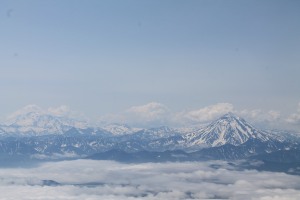
A view of the edge of the world from the plane.
When we land, though, it really does feel like the edge of the world. There’s snow-covered mountains in the distance and the air smells of the sea, giving us the impression that if we just walk past that one last horizon, we’ll fall off the edge of the earth.
It’s, interestingly enough, the perfect place to read Cixin Liu’s The Three Body Problem, one of the most significant works of recent Chinese science fiction, for a variety of reasons.
The seclusion of Kamchatka is one of the major reasons. In the novel, the post-revolutionary People’s Republic of China exiles many intellectuals and other “counter revolutionaries” to the Greater Kinghan Mountains in Northeastern China to fell wood, and Ye Wenje, the daughter of an intellectual who is thus considered suspect, gets sent to this secluded place, to the “huge sky and open air” (24) of Inner Mongolia, where she both admires the solitary nature and laments its destruction. Though Russia isn’t China, and despite Kamchatka’s familiar birch trees (so common in Belarus), the forested mountains, the huge sky and open air, the feeling of being on the edge of the world – they give the place a breathtaking, solitary, beautiful air that make it seem not unlike the one Ye Wenje is sent to.

The forested mountains and wide open sky of Kamchatka
At the same time, the feeling of seclusion is yet another similarity. Kamchatka is not only physically far from home; it’s also disconnected. Finding internet in Petropavlovsk, the major city of the province, is like looking for gold at the end of a rainbow. Every time I ask about where I could find it, a kind taxi driver or store owner tells me that it’s either incredibly slow or not there -– they simply haven’t laid down the cables for it yet, so they have to get their internet via satellite dish. And, as I notice driving around town, the city is covered in satellite dishes larger than any I’ve ever seen, one on practically every rooftop. Banks, government buildings, and hotels all have them due to their necessity for a connection to outside networks, but that doesn’t mean just anyone can use them.
At the same time, the satellite dishes are fitting in another way. A key aspect of the novel is a secret Chinese government program to send signals out to space and potentially make contact with intelligent life; Ye Wenje ends up at the installation of Radar Peak after the Chinese Cultural Revolution, working on precisely this project. Radar Peak, and Red Coast Base, which contain it, are fictional, and fictionally located in the Greater Khingan Mountains – which are in Northeastern China, which is about as close as you can get to Kamchatka and stay in China.
Thus, though Radar Peak itself is secluded, separated from humanity, it ironically has some of the best communication technology it is possible to possess as it seeks to make contact with intelligent life in the universe. Similarly, on the secluded peninsula of Kamchatka, the only way to communicate with other intelligent life seems to be through these humongous dishes, which are more than atmospheric as I read about radio telescopes and transmission monitoring systems. And yet, ironically, these endless dishes seem to enable me with a better ability to communicate with my friends and family than I have in the U.S.A: I have four bars and 4G almost everywhere in Petropavlovsk while my phone provider, T-Mobile, provides me with free international data. Writing the rest of this post from my home in Michigan, I have a measly two bars in the city of Ann Arbor. It’s a weird sense of seclusion and yet not, of a connection that is directly tangible and yet utterly tenuous, the endless dishes making me aware of the way that human communication seems to span the globe so easily, and yet is such a complex system.
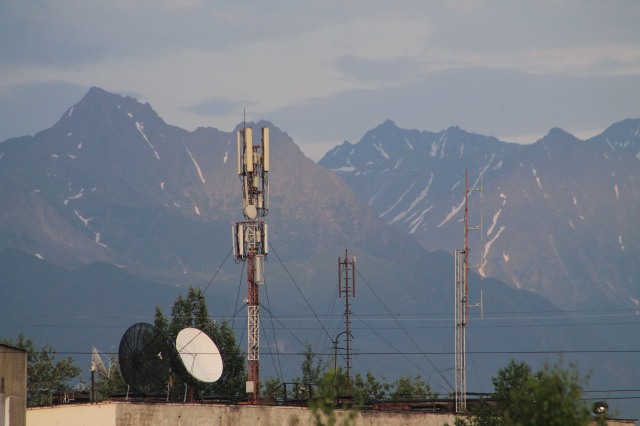
A view of an array of satellite dishes and antennas against a backdrop of Kamchatka’s mountains.
At the same time, another aspect that connects me to the book is the exploitation of nature. In The Three Body Problem, Ye Wenje belongs to the Inner Mongolia Production and Construction Corps, which cuts down almost all of the trees in the Greater Kinghan Mountains, thus destroying the ecosystem. In fact, a key point in the book is Ye Wenje reading the book Silent Spring, a 1962 novel about the environmental effects of pesticides, and being inspired to write a letter to the Chinese government about the devastation she sees around her:
And so, under their chain saws, vast seas of forests turned into barren ridges and denuded hills. Under their tractors and combine harvesters, vast tracts of grasslands became grain fields, then deserts.
Ye Wenje could only describe the deforestation that she witnessed as madness. The Tall Dahurian larch, the evergreen Scots pine, the slim and straight white birch, the cloud-piercing Korean aspen, the aromatic Siberian fir, along with black birch, oak, mountain elm, Chosenia arbutifolia – whatever they laid eyes on, they cut down. (24)
This letter is an act that changes the trajectory of her life, and the attention the book draws to the environmental devastation is yet another aspect of the excellent historical research Cixin Liu did in penning this book.
These words capture much of how I feel about Kamchatka, and the exploitation of its natural resources- a fact in some ways tied to the change in political power that occurred in 1991. Kamchatka is gorgeous, but the stories of its pristine wilderness being exploited are endless.
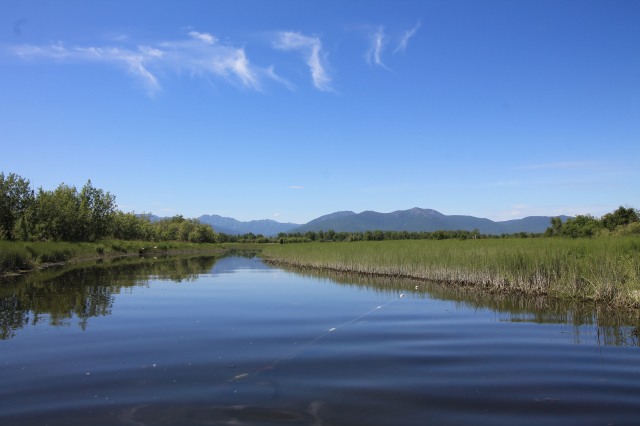
The Kamchatka river, with a gorgeous view of the sky and mountains – but if you look down, you can see the line of the poachers’ net running across the river.
The rivers are overfished, we’re told by practically everyone, which makes the bears hungry, causing them to come into the cities looking for food. Though the fine for unlicensed fishing is huge, poachers (“bracaniers” in Russian; Kamchatkans have a special word for their poachers) still set up nets to overfish the rivers; a few days into my stay, we went on a boat excursion down the river Kamchatka, where we found a net set up by poachers across a tributary of the river, such that no fish could pass at all. The net was full of fish, many of them dead, and it was clear that this kind of fishing was unsustainable. Later on, we ran into the Sea/Marine Life Conservation Police, and sent them down that same river- but only after we freed some of the fish that were alive.
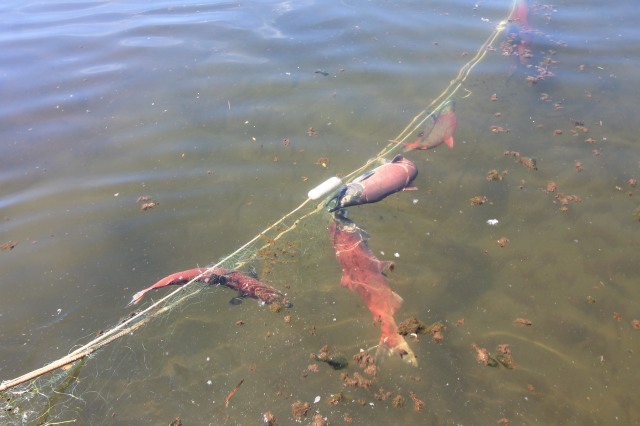
A view of the edge of the world from the plane.
At the same time, hunting is big business in Kamchatka: a license to kill a bear costs $10,000, and that’s one of the cheaper ones. The hunters we met insist that the bear population needs to be kept down, so the hunting really is sustainable, but I’m not sure if this is true for all the animals for which hunting licenses are sold, including curly-horned goats and moose. A woodworking workshop we visited was full of wood, bone, and teeth, being used by the woodworkers to create souvenirs – and though he insisted that many of the bones and teeth were ones that he or others had simply found, I wondered how much of his work was sustainable.
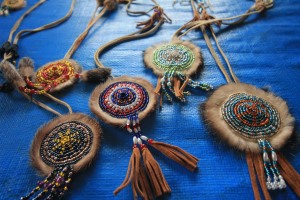
Handmade souvenirs in the traditional Itelmen design, made with animal fur – one of the many kinds of animal-based souvenirs we encountered.
Almost every souvenir store we visited had souvenirs made out of wood, fur, and bone, some of which was perhaps acquired sustainably through legal means, but much of which was likely not.America has very strict laws about importing animal products such as fur, skin, and bone, so I wasn’t able to purchase any of the souvenirs, as they would be illegal by American standards. Even if American laws were laxer, though, I would still have to do an enormous amount of work to be a conscientious buyer, inquiring as to whether the fur and bones used on the souvenirs were from animals felled for other purposes, or whether the animals were killed for their fur and bones. In short, Kamchatka didn’t seem to have the same American sentiment of “take only pictures, leave only footprints,” and the evidence of exploitation – from bottles lying where they should to the souvenir shops – was everywhere. In fact, even though I wrote part of this post on a bus between Milkovo and Petropavlovsk, which takes a road through serene forests and mountain rivers shaded by birch trees, I couldn’t get rid of the feeling that this serene, peaceful beauty isn’t quite as pristine as it looks.
-

-
The supplies of a souvenir workshop we visited, including fur and trees felled by the woodworker himself
-

-
An intricate souvenir carved out of a moose antler.
-

-
A mammoth bone ,on display, but likely about to be used to make some kind of souvenir.
-

-
The teeth of various animals, used in the making of souvenirs.
-

-

Kamchatka is beautiful, but it seems to be fighting a losing battle in terms of preserving that beauty, just as in the novel, Ye Wenje’s letter to the Chinese government about the harm to the ecosystem falls on deaf ears. Even as Kamchatka is secluded, almost inaccessible to those who don’t speak Russian (given the lack of anything in comprehensible English) – just like the Khingan Mountains in the book – it is ravaged by humanity. Later in the book, the thoughts of Ye Wenje echoed in particular with me:
Indeed, even on top of Radar Peak, a place the world almost forgot, the madness and irrationality of the human race were constantly on display. Ye saw that the forest below the peak continued to fall to the deranged logging by her former comrades. Patches of bare earth grew daily, as though those parts of the Greater Khingan Mountains had had their skin torn off. When those patches grew into regions and then into a connected whole, the few surviving trees seemed rather abnormal. To complete the slash-and-burn plan, fires were lit on the bare fields, and Radar Peak became the refuge for birds escaping the fiery inferno. (270)
The same could be said of Kamchatka: even here, at the end of the world, the landscape is not pristine. The madness and irrationality of the human race that Ye Wenje could just as well be the deranged exploitation of natural resources I see and hear about everywhere.
(This is the first of two posts I’ll be making about reading The Three Body Problem in Kamchatka; the second will have to do with the state, ideology, and scientific/technological progress).
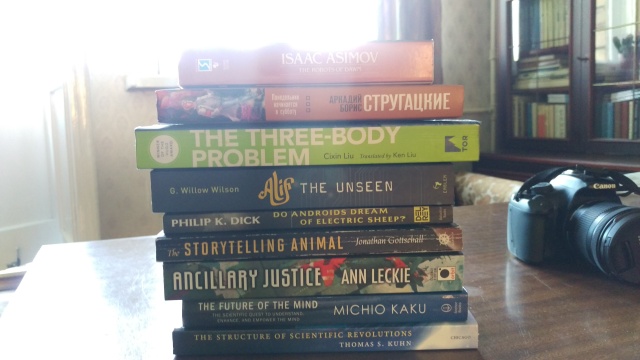
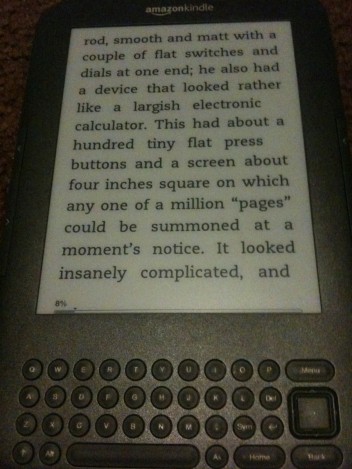


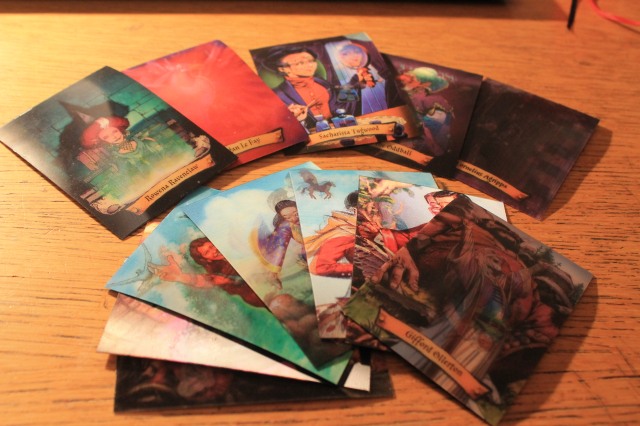
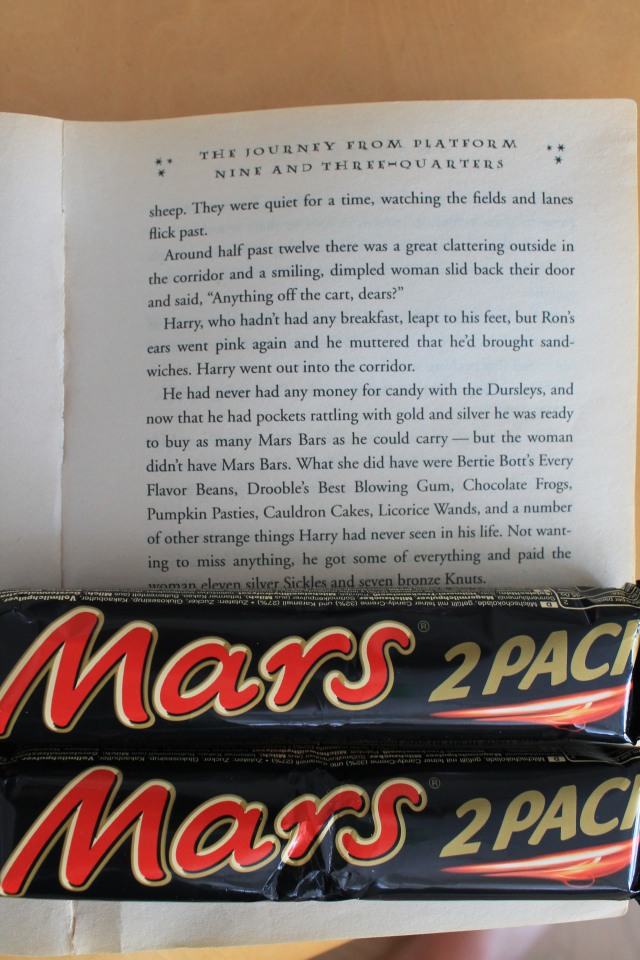














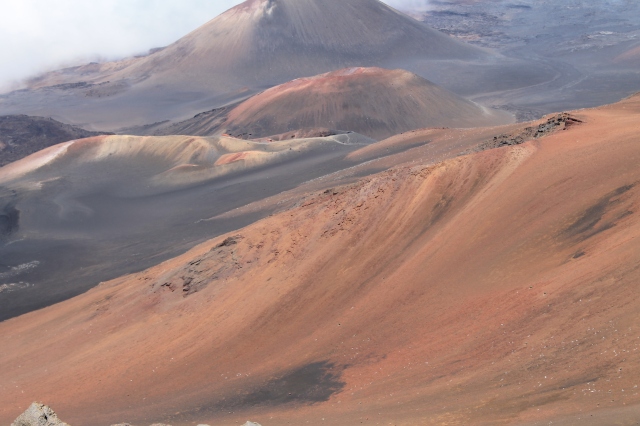
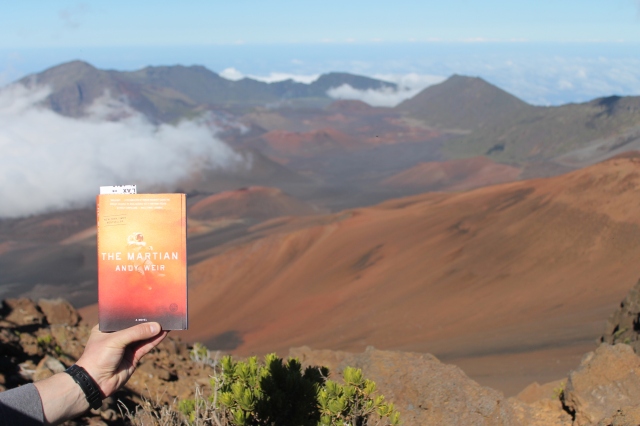
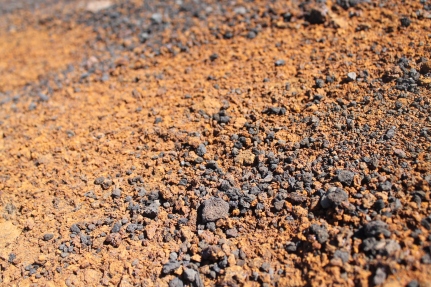
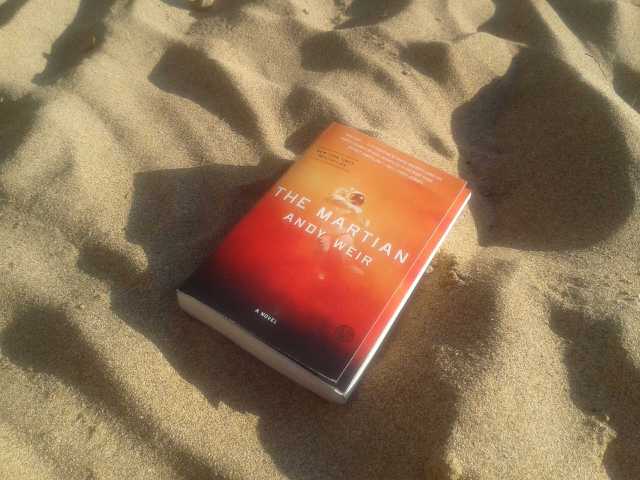
 Queen Margot/ La Dame de Monsoreau/ The Forty Five – Alexandre Dumas
Queen Margot/ La Dame de Monsoreau/ The Forty Five – Alexandre Dumas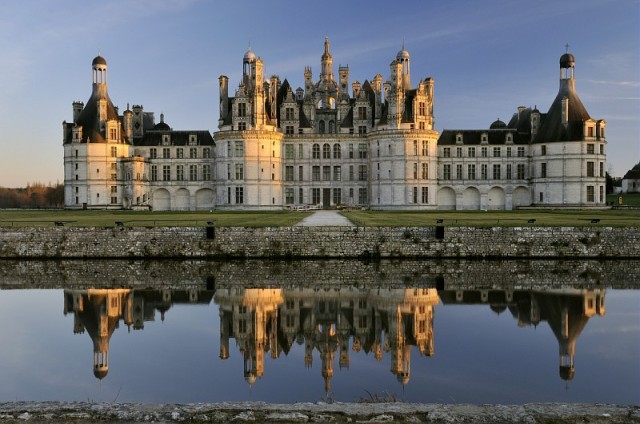
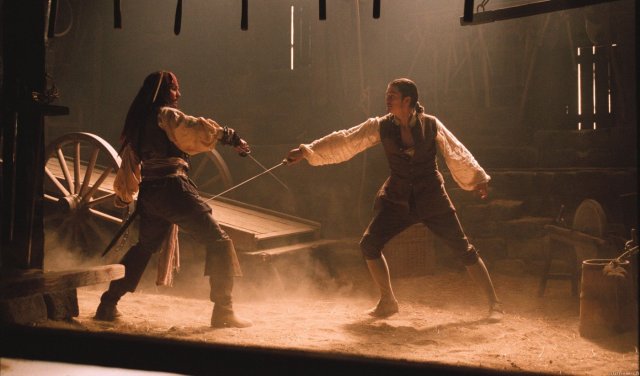
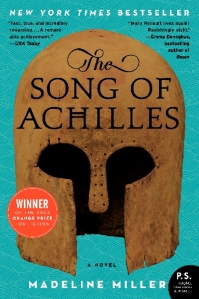 The Song of Achilles – Madeline Miller
The Song of Achilles – Madeline Miller  Kushiel’s Dart – Jacqueline Carey
Kushiel’s Dart – Jacqueline Carey